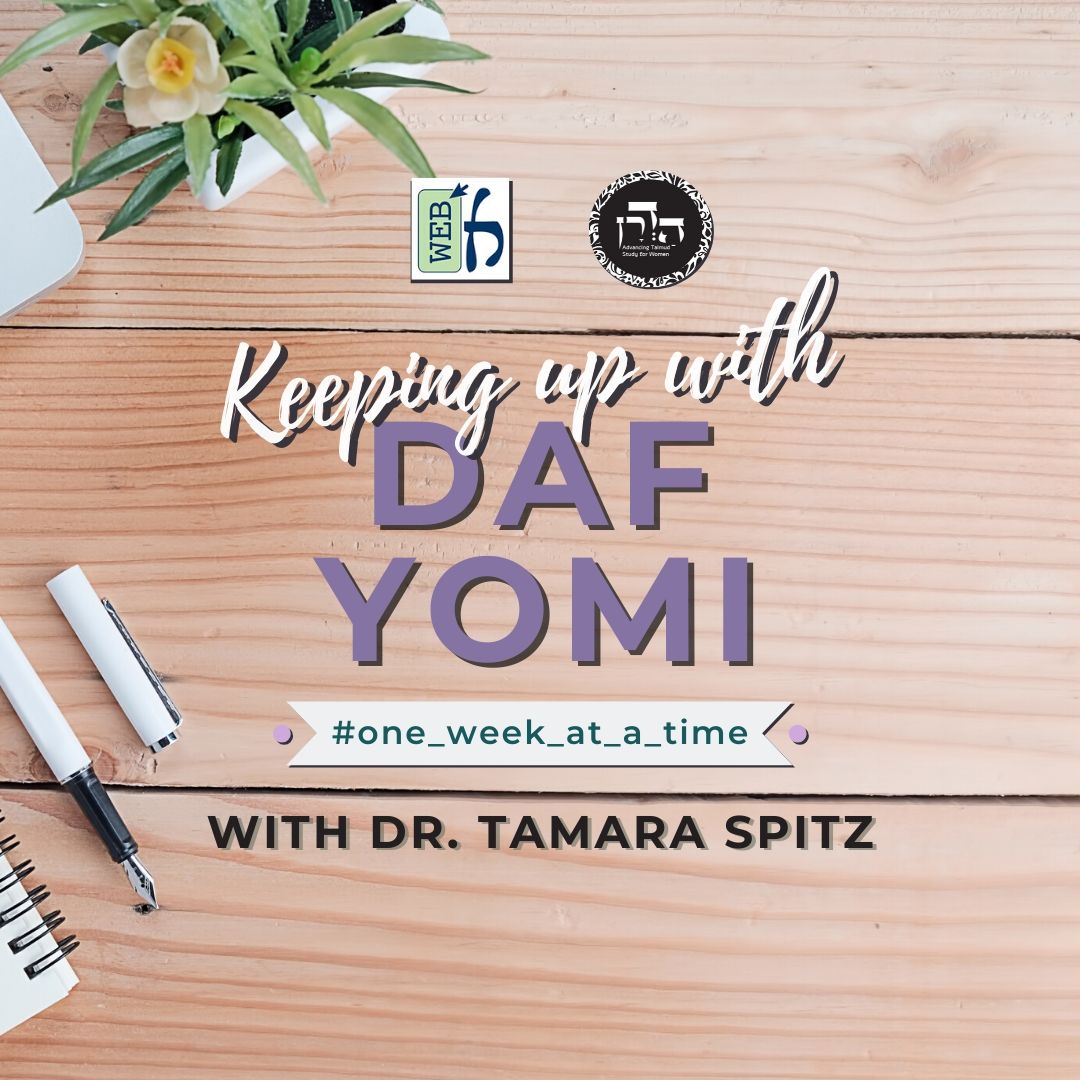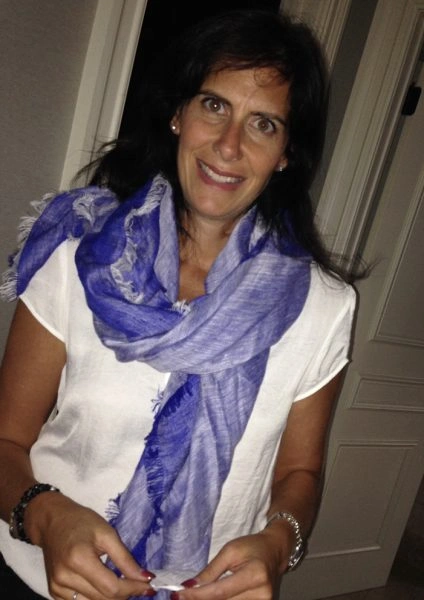Rav Ada son of Rav Yitzchak brings a different suggestion for how to resolve the contradiction between the mishna in Middot and the mishna in Tamid – the chamber of the sheep must have been able to be perceived as both in the North and in the South, depending on one’s perspective. But in which was it actually situated? The gemara concludes that it must on been in the Southeast side as they infer from another contradiction between the mishnayot regarding the location of the showbread. Rav Huna has resolved it by saying that each mishna describes the order of the chambers in a different manner – one goes clockwise (left) and the other counter clockwise (right). In order for the location to match up based on Rav Huna’s answer, one can only explain it if the chamber of the lambs was in the Southwest side. How can one mishna’s order go to the left (clockwise) if we learned that all turns in the Temple were to the right? The gemara explains in more detail the mishna’s ruling that the Kohen Gadol can do whatever rituals they wanted and could take whatever portions they wanted. How much could they take? The rabbis and Rebbi disagree.
Yoma 17
Share this shiur:
Want to dedicate learning? Get started here:


Today’s daily daf tools:
Today’s daily daf tools:
Delve Deeper
Broaden your understanding of the topics on this daf with classes and podcasts from top women Talmud scholars.
New to Talmud?
Check out our resources designed to help you navigate a page of Talmud – and study at the pace, level and style that fits you.
The Hadran Women’s Tapestry
Meet the diverse women learning Gemara at Hadran and hear their stories.
Yoma 17
אֶלָּא לָאו שְׁמַע מִינַּהּ, רַבִּי אֱלִיעֶזֶר בֶּן יַעֲקֹב הִיא. שְׁמַע מִינַּהּ.
Rather, must one not conclude from it that that the mishnayot in tractate Middot are in accordance with the opinion of Rabbi Eliezer ben Ya’akov? The Gemara concludes: Indeed, conclude from it that this is so.
רַב אַדָּא בְּרֵיהּ דְּרַב יִצְחָק אָמַר: הַאי לִשְׁכָּה אַקְצוֹיֵי מַקְצְיָא, וּדְאָתֵי מִצָּפוֹן מִתְחַזְיָא לֵיהּ בְּדָרוֹם, וּדְאָתֵי מִדָּרוֹם מִתְחַזְיָא לֵיהּ בְּצָפוֹן.
§ In an additional attempt to resolve the contradiction with regard to the Chamber of the Lambs, Rav Adda, son of Rav Yitzḥak, said: This chamber was removed from the corner, as it was not actually in the corner of the Hall of the Hearth but was located along the middle of the western side of the hall. And therefore, for one who comes from the north, the chamber appears to him to be in the south of the hall; and for one who comes from the south, the chamber appears to him to be in the north of the hall.
וּמִסְתַּבְּרָא דִּבְמַעֲרָבִית דְּרוֹמִית הֲוַאי. מִמַּאי — מִדְּרָמֵינַן לֶחֶם הַפָּנִים אַלֶּחֶם הַפָּנִים,
The Gemara comments: In any event, it is reasonable to say that this chamber was closer to the southwest corner than it was to the northwest corner. From where does one arrive at that conclusion? From the fact that we raise a contradiction between the mishna in tractate Tamid, where we learned that the chamber in which the shewbread was prepared stood in the northeast corner, and the mishna in tractate Middot, where we learned that the chamber in which the shewbread was prepared stood in the southeast corner.
וּמְשַׁנֵּינַן, אָמַר רַב הוּנָא בְּרֵיהּ דְּרַב יְהוֹשֻׁעַ: מָר קָא חָשֵׁיב דֶּרֶךְ יָמִין, וּמָר קָא חָשֵׁיב דֶּרֶךְ שְׂמֹאל.
And we resolve the contradiction based on what Rav Huna, son of Rav Yehoshua, said: The Master in tractate Middot envisions the chambers as one coming via the right, from the south to the east, then to the north and then to the west. And the Master in tractate Tamid envisions the chambers as one coming via the left, from the south to the west, then to the north and then to the east. Both agree with regard to the location of the chamber in which the shewbread was prepared; they merely describe that location from different perspectives.
אִי אָמְרַתְּ בִּשְׁלָמָא בְּמַעֲרָבִית דְּרוֹמִית הֲוַאי, הַיְינוּ דִּמְתָרֵץ לֶחֶם הַפָּנִים אַלֶּחֶם הַפָּנִים. אֶלָּא אִי אָמְרַתְּ צְפוֹנִית מַעֲרָבִית הֲוַאי, סוֹף סוֹף מַאי תֵּירוּצָא דְּלֶחֶם הַפָּנִים! אֶלָּא לָאו שְׁמַע מִינַּהּ, בְּמַעֲרָבִית דְּרוֹמִית הֲוַאי. שְׁמַע מִינַּהּ.
Granted, if you say that the Chamber of the Lambs was actually closer to the southwest corner, that is how Rav Huna resolves the contradiction between one mishna discussing the shewbread and the other mishna discussing the shewbread. However, if you say that the Chamber of the Lambs was in the northwest corner, ultimately, what is the resolution with regard to the shewbread? Even if you envision the path from the other direction, the Chamber of the Seals interposes between the Chamber of the Lambs and the chamber where the shewbread is prepared. Rather, must one not conclude from it that the Chamber of the Lambs was indeed in the southwest? The Gemara concludes: Indeed, conclude from it that this is so.
וְהָאָמַר מָר: כׇּל פִּינּוֹת שֶׁאַתָּה פּוֹנֶה לֹא יִהְיוּ אֶלָּא דֶּרֶךְ יָמִין לַמִּזְרָח? הָנֵי מִילֵּי בַּעֲבוֹדָה. אֲבָל הָכָא — חוּשְׁבָּנָא בְּעָלְמָא הוּא.
The Gemara questions the assertion that one tanna envisions the chambers as one coming via the left. But didn’t the Master say: All turns that you turn should be only to the right, which in certain cases is to the east? Here the turns are to the left. The Gemara answers: This restriction applies only in the course of performing the Temple service; however, here, it is a mere reckoning, and no priest actually proceeded that way from one chamber to the other.
שֶׁכֹּהֵן גָּדוֹל מַקְרִיב חֵלֶק בָּרֹאשׁ וְנוֹטֵל חֵלֶק בָּרֹאשׁ. תָּנוּ רַבָּנַן: כֵּיצַד מַקְרִיב חֵלֶק בָּרֹאשׁ? אוֹמֵר: עוֹלָה זוֹ אֲנִי מַקְרִיב, מִנְחָה זוֹ אֲנִי מַקְרִיב.
§ It was taught in the mishna: As the High Priest sacrifices any portion that he chooses first and takes any portion that he chooses first. The Sages taught in a baraita: How does the High Priest sacrifice any portion that he chooses first? If the High Priest so desires, he says: This burnt-offering, I am sacrificing, or: This meal-offering, I am sacrificing. That is sufficient, and the High Priest does not participate in a lottery.
כֵּיצַד נוֹטֵל חֵלֶק בָּרֹאשׁ? אוֹמֵר: חַטָּאת זוֹ אֲנִי אוֹכֵל, אָשָׁם זֶה אֲנִי אוֹכֵל. וְנוֹטֵל חַלָּה מִשְׁתֵּי חַלּוֹת, אַרְבַּע אוֹ חָמֵשׁ מִמַּעֲשֵׂה לֶחֶם הַפָּנִים. רַבִּי אוֹמֵר: לְעוֹלָם חָמֵשׁ, שֶׁנֶּאֱמַר: ״וְהָיְתָה לְאַהֲרֹן וּלְבָנָיו״ — מֶחֱצָה לְאַהֲרֹן וּמֶחֱצָה לְבָנָיו.
How does the High Priest take any portion that he chooses first? The High Priest says: This sin-offering, I am eating, or: This guilt-offering, I am eating. And he may even take one loaf of the two loaves offered on the festival of Shavuot. He may take four or five of the twelve shewbread loaves that are distributed to the priests every Shabbat. Rabbi Yehuda HaNasi says: The High Priest always takes five of the twelve shewbread loaves, as it is stated: “It shall be for Aaron and his sons and they shall eat it in a sacred place” (Leviticus 24:9). From the fact that Aaron and his sons are listed separately, it is derived that half of the loaves were given to Aaron, or the High Priests who succeeded him, and half were given to his sons. Since, as explained below, only ten of the loaves were actually distributed, the High Priest received five.
הָא גּוּפַהּ קַשְׁיָא: אָמְרַתְּ נוֹטֵל חַלָּה אַחַת מִשְׁתֵּי חַלּוֹת, מַנִּי — רַבִּי הִיא, דְּאָמַר פַּלְגָא שָׁקֵיל. אֵימָא מְצִיעֲתָא: אַרְבַּע אוֹ חָמֵשׁ מִמַּעֲשֵׂה לֶחֶם הַפָּנִים, אֲתָאן לְרַבָּנַן, דְּאָמְרִי: לָא שָׁקֵיל פַּלְגָא. אֵימָא סֵיפָא, רַבִּי אוֹמֵר: לְעוֹלָם חָמֵשׁ. רֵישָׁא וְסֵיפָא רַבִּי, וּמְצִיעֲתָא רַבָּנַן?
This baraita is itself difficult, as it is self-contradictory. First you said: He takes one loaf of the two loaves offered on the festival of Shavuot. Whose opinion is this? It is the opinion of Rabbi Yehuda HaNasi, who said that the High Priest takes half. Say the middle clause of the baraita as follows: The High Priest takes four or five of the twelve shewbread loaves; we have come to the opinion of the Rabbis, who say that the High Priest does not take half but takes less than half. Say the last clause of the baraita as follows: Rabbi Yehuda HaNasi says that the High Priest always takes five. The Gemara asks: Is that to say that the first clause and the last clause of the baraita are in accordance with the opinion of Rabbi Yehuda HaNasi, and the middle clause is in accordance with the opinion of the Rabbis? That conclusion is difficult.
אָמַר אַבָּיֵי: רֵישָׁא וּמְצִיעֲתָא רַבָּנַן — וּמוֹדוּ רַבָּנַן בִּפְרוּסָה, דְּלָאו אוֹרַח אַרְעָא לְמִיתְּבַהּ לְכֹהֵן גָּדוֹל.
Abaye said: The first clause and the middle clause of the baraita are in accordance with the opinion of the Rabbis, and in the case of the two loaves, the Rabbis concede with regard to a piece of a loaf that it is inappropriate to give it to the High Priest. According to the Rabbis, the High Priest should actually receive less than one loaf, as in their opinion he is entitled to less than half; however, since it is inappropriate to give him a piece of the loaf, he takes an entire loaf as his portion.





















